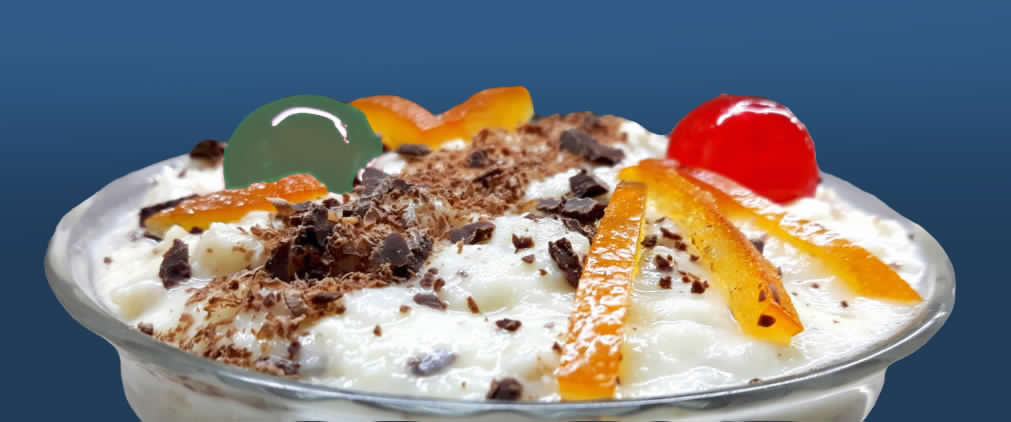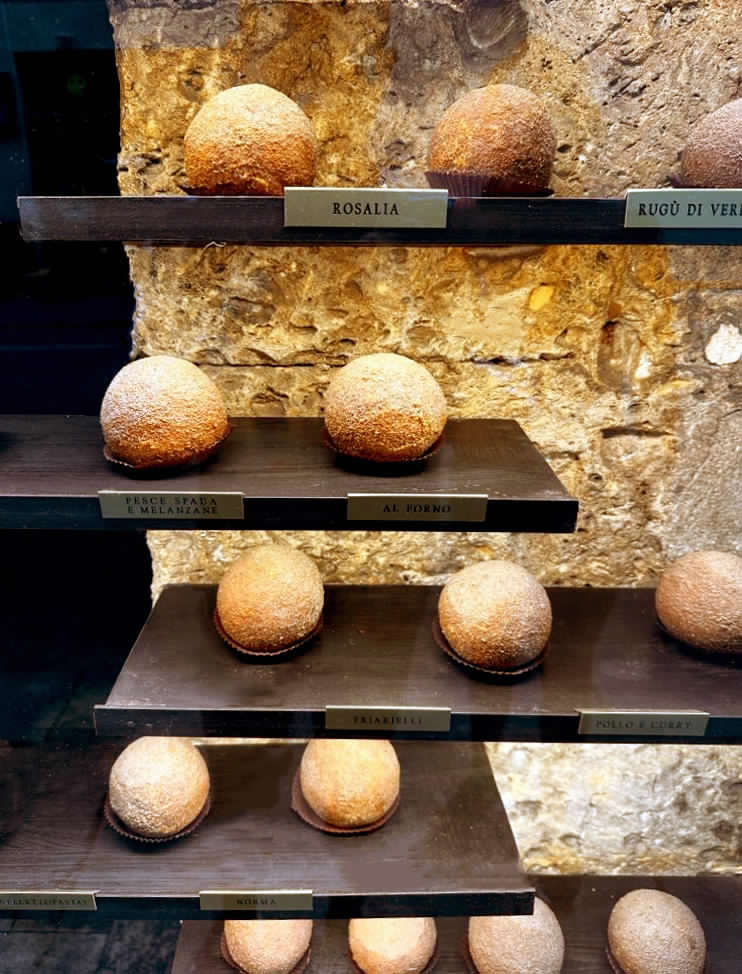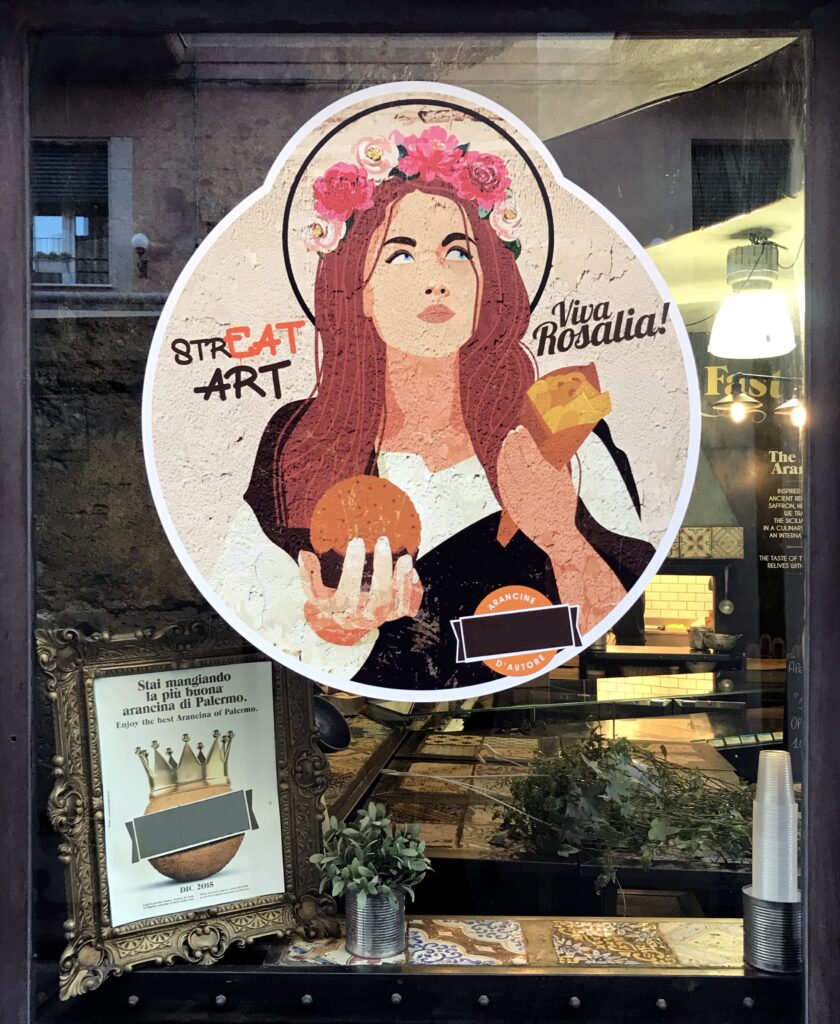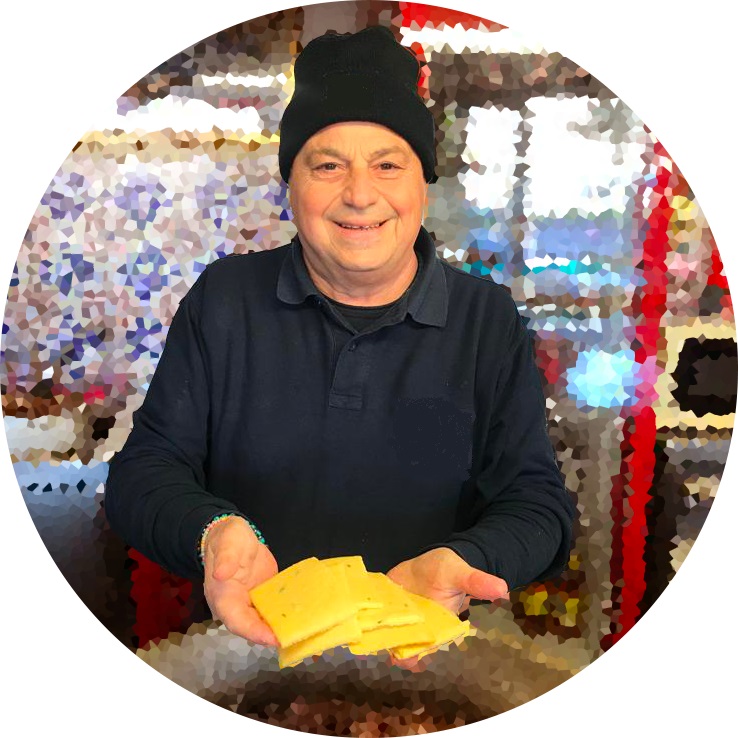╔
La salvezza che arrivò a Palermo dal mare nel giorno di Santa Lucia
Se provaste a proporre ad un/una palermitano/a il gioco delle associazioni mentali, qualora gli pronunciaste il nome di “Santa Lucia” lui/lei risponderebbe istantaneamente “cuccìa!”, illuminandosi di colpo! Nella sua mente si accenderebbe un caleidoscopio gastronomico che con la devozione religiosa ha poco o nulla a che fare.
A disvelare il nesso logico tra le due parole è una antica leggenda che riferisce dei grandi patimenti di fame subiti dai cittadini di Palermo a causa di una grave carestia che, nella metà del XVII secolo, afflisse la città. Quando sembrava che ormai non ci fosse più scampo, la salvezza inaspettatamente arrivò dal mare: il 13 dicembre 1646, il giorno in cui si commemora Santa Lucia, attraccò nel porto di Palermo una nave colma di grano. I cittadini, stupefatti, credettero ad un miracolo e lo attribuirono alla Santa.
Tanta era la fame che i palermitani si affrettarono a prelevare dalla nave il prezioso carico e, per riempire al più presto le pance, mangiarono i chicchi di grano semplicemente bolliti. La tradizionale molitura del grano per ricavarne farina e, da questa, preparare il pane o la pasta, avrebbe richiesto del tempo, troppo tempo per una popolazione arrivata allo stremo.
Da allora, i palermitani commemorano nel giorno di Santa Lucia la salvezza che arrivò dal mare ripetendo il salvifico gesto di consumare il grano bollito. La devozione popolare alla santa vieta categoricamente di mangiare in questo giorno alimenti prodotti con la farina, e dunque sono banditi pane e pasta ma anche pizze, focacce, calzoni e così via. Un antico proverbio palermitano recita: “Santa Lucia, pani vurria! Pani nu nn’haiu: accussì mi staju” (“Oh Santa Lucia, vorrei del pane! Pane non ho: e così mi sto”).
Si tratterebbe dunque di un giorno di privazione se la straordinaria fantasia culinaria siciliana non fosse stata capace di trasformare il digiuno devozionale in un glorioso festino gastronomico. I chicchi di grano, come da tradizione, vanno consumati interi e bolliti, ma nulla vieta di accompagnarli, ad esempio, con un latticino fresco, con qualche frutto candito, con un nonnulla di cioccolata e con qualche spezia profumata. Ecco che dall’accostamento di questi semplici ingredienti nasce la cuccìa, un delizioso dolce al cucchiaio che tutte le mattine del 13 dicembre appare sulle tavole dei palermitani fin dal primo mattino, sostituendosi a biscotti e ai croissant, e si impone anche a fine pasto come dolce devozione a Santa Lucia.
Try to gamble an autochthonous Palermitan with a game of mental associations by evoking the name of “Saint Lucia”. He/she would promptly say “cuccìa!”, with a sparkling glow in his eyes! His/her mind would be in fire with a gastronomic kaleidoscope, which has little or nothing to do with religious devotion.
The logical connection between the two words is revealed by an ancient legend which speaks of the enormous hunger suffered by the Palermitans due to the severe famine that struck the city at the end of the 17th century. When it seemed that there was no escape left, salvation unexpectedly arrived from the sea: on 13th December 1646, the day on which Saint Lucia is celebrated, a ship full of wheat docked at the port of Palermo. The gaping citizens believed in a miracle and attributed it to the Saint.
Palermitans were so hungry that they quickly grabbed the precious food from the ship and, to eat as fast as they could, they simply boiled the wheat as grains and ate them just like this. The traditional wheat milling done to obtain flour from which making bread and pasta would have been a long procedure, way too long for a population starving with famine.
Since then, on Saint Lucia’s day Palermitans commemorate the salvation that arrived from the sea by repeating the saving procedure to eat boiled wheat grains. The popular devotion to the Saint categorically forbids on this day to eat food based on flour; are therefore banned bread and pasta, but also pizza, buns, and similar. A traditional palermitan saying goes like this: “Santa Lucia, pani vurria! Pani nu nn’haiu: accussì mi staju” (“Oh Saint Lucia, I would love to have some bread! But I don’t have any: therefore, I don’t pretend any”).
One would think that this is a day of food deprivation, if it wasn’t for the extraordinary Sicilian culinary fantasy, capable of transforming the devotional starvation in a glorious gastronomic feast. Wheat grains, as by tradition, must be consumed as whole and boiled, yet nothing forbids to mix them with other food such as dairies or candied fruit, or maybe tiny chocolate crumbs and scented spices. And there you go: from the mix of these ingredients cuccìa is born, a delicious dessert devotedly appearing on the tables of all Palermitans on the early morning of every 13th of December, gluttony replacing biscuits and croissants, also reappearing at the end of supper as sweet devotion to the Saint.
La cuccìa, dolce al cucchiaio della tradizione palermitana.
The cuccìa, spoon dessert of the Palermitan tradition.

Non cercatela per il resto dall’anno: non la trovereste! La cuccìa si prepara solo e soltanto per il giorno di Santa Lucia. La ricetta tradizionale prevede una preparazione che dura tre giorni (quasi un rituale spirituale!). I primi due servono per tenere in ammollo il grano che il terzo giorno viene messo a bollire; una cottura lenta e lunga, che dura circa due ore. Una volta cotto e raffreddato, il grano viene incorporato alla ricotta (rigorosamente di pecora) passata al setaccio fine insieme allo zucchero, affinché possa acquisire una consistenza pari al velluto. Infine, il composto viene arricchito con la zuccata (sottili fette di zucca candita), ciliegie caramellate, gocce di cioccolato fondente e, infine, profumato con cannella in polvere.
La cuccìa, in quanto un dolce, non può certo da sola soddisfare il fabbisogno alimentare di un intero giorno. Ecco allora che la fantasia del palermitano si spinge oltre, alla ricerca di altre ricette da elaborare sulla base di ingredienti non vietati. Non vietati sono, ad esempio, il riso o i ceci. Regina indiscussa del giorno di Santa Lucia diviene così l’arancina, la dorata e croccante sfera di riso simile ad un’arancia che custodisce ripieni golosi nel suo cuore. Padrona di tutte le strade diviene la panella, la croccante frittatina di farina di ceci aromatizzata con il prezzemolo.
Improvvisamente, dalla sera alla mattina, i panifici di Palermo si trasformano in friggitorie e, per un giorno, le arancine prendono il posto del pane nei banconi di vendita e leziosamente fanno capolino dalle vetrine ammiccando ai passanti.
Don’t you even bother to ask for cuccìa any other day of the year: no chance! Cuccìa is prepared only on Saint Lucia’s day. The original recipe consists in a procedure that lasts for three days (a sort of spiritual ritual!). During the first two days, wheat grains are soaked in water. On the third day, wheat is boiled slowly for at least two hours. After cooling down, wheat grains are mixed with goat ricotta cheese, which has been previously seasoned with sugar and passed through a fine strainer. This procedure is important to make sure ricotta cheese acquires a velvety texture. Then, chocolate chips, candied pumpkin, caramelized cherries and cinnamon powder are added to garnish.
Let’s not forget that cuccìa is a dessert and cannot be the only food available for the entire day. So, the imagination of Palermitans comes to help once again, searching for alternative recipes based on food that has not been banned by the tradition. Not banned are, for instance, rice and chickpeas. Therefore, the incontestable Queen on Saint Lucia’s day becomes the arancina, a golden and crunchy rice ball which looks very similar to an orange, and which is the casket of greedy fillings. Likewise, the boss of street food become the panella, a crunchy fritter made with chickpeas flour seasoned with parsley.
All in a sudden, from dusk to dawn, the bakeries of Palermo turn into frying shops and, for one single day, arancine replace bread on the sales counters and mischievously blink at the passers-by.
Vetrina del centro storico di Palermo con arancine ripiene con diverse varietà di condimenti. (Foto: Maurizio Carta).
Showcase in the historic centre of Palermo with arancine stuffed with different varieties of toppings. (Photo: Maurizio Carta).

Per non fare dispetto alla santa patrona di Palermo, Santa Rosalia, i palermitani dedicano le arancine anche lei (non si sa mai, si ingelosisse di Lucia!).
To not tease the Patron Saint of Palermo, Saint Rosalia, the Palermitans dedicate one arancina also to her (just in case she feels jealous of Lucia!).
Vetrina del centro storico di Palermo che dedica l’arancina alla santa patrona della città, Santa Rosalia. (Foto: Maurizio Carta).
Showcase of the historic centre of Palermo which dedicates the arancina to the patron saint of the city, Saint Rosalia. (Photo: Maurizio Carta).

I venditori ambulanti di cibo da strada spuntano ad ogni crocevia proponendo panelle appena fritte, da consumare rigorosamente da sole e non come farcia di un panino, come nei restanti giorni dell’anno si usa.
The vendors of street food appear at any junction, selling panelle that have been just fried, to be rigorously eaten as they are, and not as the filling of a burger, as instead are usually consumed during the other days of the year.
Venditore di panelle del centro storico di Palermo.
Seller of panelle in the historic centre of Palermo.

Senza alcuna ombra di dubbio a Palermo, quando arriva il 13 dicembre, tutti sanno che la rinuncia al pane e alla pasta (gli irrinunciabili quotidiani nella dieta dei palermitani) più che una penitenza diventa la scusa per concedersi – almeno – un’arancina, qualche panella e una cucchiaiata di cuccìa.
Un gesto “assolutamente” devozionale e, dunque, compito obbligatorio di ogni buon fedele palermitano!
With no doubt, in Palermo, on the 13th of December, everyone knows that renouncing to bread and pasta (the daily indispensables in Palermitans diet), more than a penance becomes the excuse to indulge into – at least – one arancina, a few panellas and a spoonful of cuccìa.
A ceremonial that is “totally” devotional and, therefore, a must-do for every faithful Palermitan!
English translation by Ester Badami
IMMAGINE INIZIALE | La Cala, l’antico porto di Palermo, e Santa Lucia. (Fonte: composizione grafica dell’autore).
HEAD IMAGE | La Cala, the ancient port of Palermo, and Saint Lucia. (Source: Graphic composition by the author).